You’re strolling through your garden on a warm summer morning, coffee in hand, when a flash of crimson catches your eye. Bees are buzzing, butterflies are flitting, and there’s this gorgeous plant stealing the show.
That’s bee balm, folks—a total rockstar in any garden. With its spiky blooms and minty scent, Monarda (that’s its fancy name) doesn’t just look good; it works hard, attracting pollinators and keeping pests at bay. But here’s the kicker: pair it with the right bee balm companion plants, and you’ve got a garden that’s practically a living masterpiece.
In this guide, I’m sharing the best bee balm companion plants, plus all the tips you need to grow this beauty like a pro. From planting seeds to deadheading, we’re covering it all to make your garden the envy of the neighborhood. Ready to get your hands dirty?
Let’s jump in!
Table of Contents
Why Plant Bee Balm Companion Plants
Think of companion planting as setting up your plants on a blind date where everyone gets along. It’s about choosing plants that help each other out—whether by boosting soil health, shooing away pests, or pulling in pollinators like bees and hummingbirds. Bee balm is a natural fit for this because its vibrant flowers are a pollinator magnet, and its strong, minty smell sends pests like aphids and deer running.
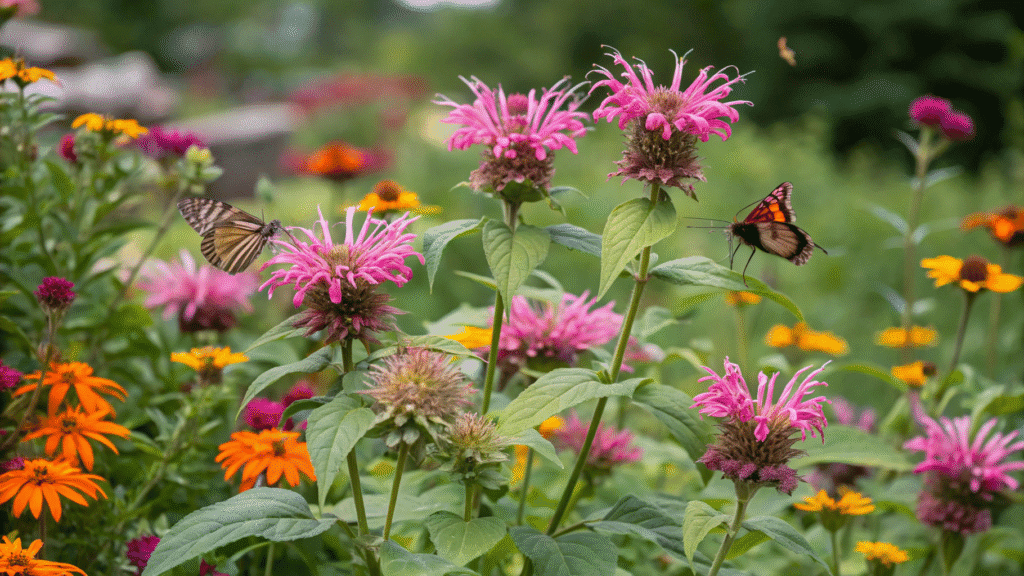
But here’s the catch: not every plant is a good match. Some might hog nutrients or attract the wrong crowd (looking at you, cabbage worms). Get it right, though, and bee balm companion plants can do wonders:
- More pollinators mean better harvests for nearby fruits and veggies.
- Fewer pests without reaching for the spray bottle.
- A garden that looks like it belongs on a magazine cover.
- Healthier soil that keeps your plants happy.
So, what to plant with bee balm? Here are my go-to picks that’ll make your garden sing.
13 Best Bee Balm Companion Plants
1. Echinacea (Coneflower)
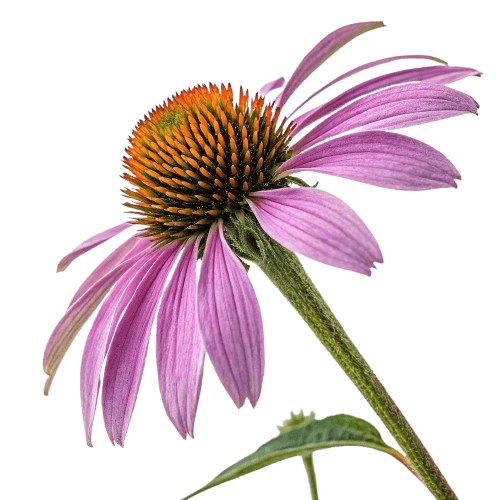
Bee balm and echinacea are like best friends who finish each other’s sentences. Both are native perennials that love sunny spots and well-drained soil. Echinacea’s purple or pink blooms (like ‘Magnus’) look killer next to bee balm’s reds or pinks, and they’re both pollinator magnets.
Echinacea’s sturdy stems prop up bee balm when it gets floppy, and they’re both low-maintenance once established.
Tip: Plant echinacea behind bee balm for a tiered effect.
2. Stella D’Oro Lilies
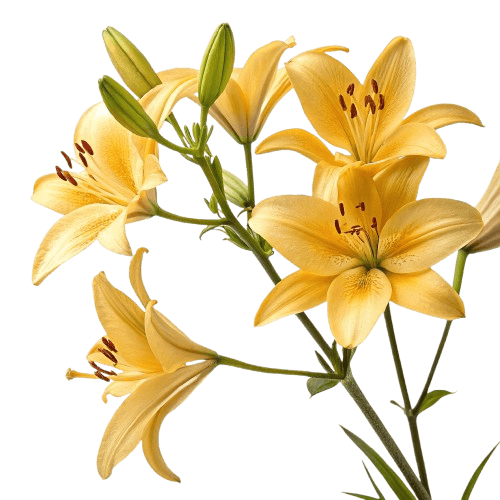
For a burst of sunshine, Stella D’Oro lilies are a good pick. These compact daylilies churn out golden-yellow flowers all summer, syncing perfectly with bee balm’s bloom time. Their short stature makes them great for the front of a border.
They thrive in the same sunny, well-drained conditions as bee balm, and their grassy leaves add a cool texture contrast.
Tip: Snip off spent lily flowers to keep them blooming, just like with bee balm.
3. Black-Eyed Susan (Rudbeckia)

Black-eyed Susan’s sunny yellow petals scream summer, especially next to bee balm’s spiky blooms. These tough native perennials handle all sorts of soil and laugh off deer.
Their daisy-like flowers balance bee balm’s funky shape, and they attract pest-eating ladybugs.
Tip: Plant in clusters of three or five for a wild, meadowy vibe.
4. Lavender

Lavender and bee balm are an unexpected but awesome pair. Lavender’s silvery leaves and purple spikes soften bee balm’s bold look, and both love sunny, dry spots. Plus, lavender’s scent keeps pests like mosquitoes away.
Lavender’s compact size doesn’t crowd bee balm, and the combo smells amazing.
Tip: Use lavender as a border around taller bee balm.
5. Tomatoes
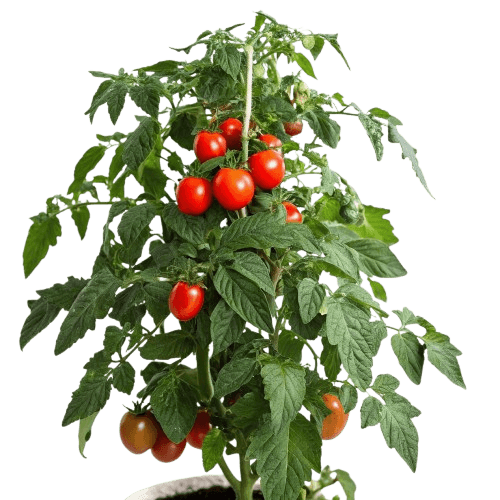
Yup, bee balm’s a veggie garden hero, too! Pair it with tomatoes, and you’ll get more fruit thanks to all the pollinators bee balm attracts. Its scent also deters tomato hornworms.
Bee balm’s height offers light shade for tomatoes in hot climates, and its roots improve soil structure.
Tip: Plant bee balm at the edge of your tomato patch to avoid shading them too much.
6. Phlox

Garden phlox, with its clusters of pink, white, or purple flowers, is a bee balm soulmate. Both love sun and moist, well-drained soil, and their blooming seasons overlap for a long-lasting show.
Phlox’s soft, rounded blooms contrast with bee balm’s spiky ones, and they both draw butterflies.
Tip: Choose mildew-resistant phlox varieties like ‘David’ to keep things healthy.
7. Salvia
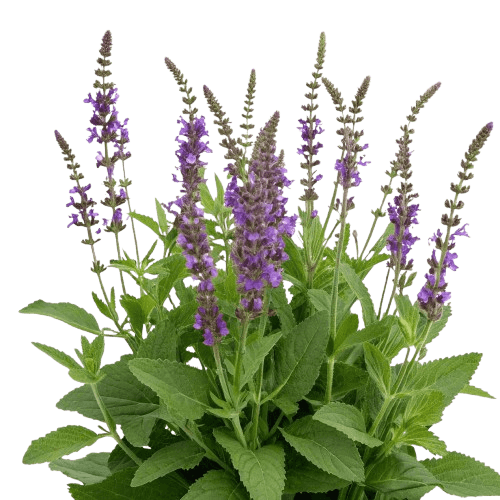
Salvia’s slender spikes of blue, purple, or red flowers are a perfect match for bee balm. These perennials share a love for sunny, well-drained spots and attract hummingbirds like crazy.
Salvia’s upright growth complements bee balm’s bushy form, creating a balanced look.
Tip: Try ‘May Night’ salvia for a deep purple that pops against red bee balm.
8. Zinnias

Zinnias are like the life of the garden party—bright, cheerful, and loved by pollinators. These annuals come in every color, so you can mix and match with bee balm’s hues.
Zinnias bloom all summer, keeping the garden lively, and they’re super easy to grow from seed.
Tip: Sow zinnia seeds directly in the garden after the last frost for quick results.
9. Joe-Pye Weed
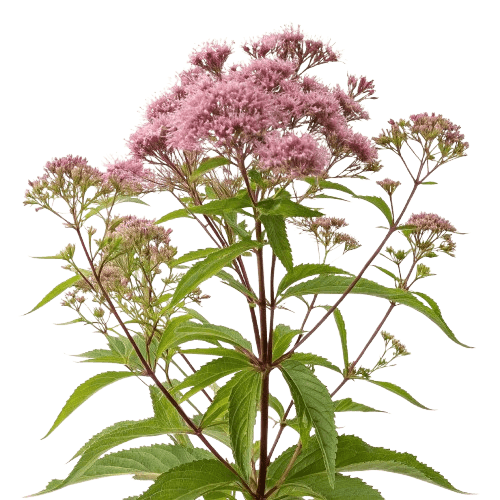
For a tall, dramatic companion, Joe-Pye weed’s dusty pink flower heads are a winner. This native perennial loves moist soil and full sun, making it a great back-of-border partner for bee balm.
It attracts butterflies and adds height without stealing the spotlight.
Tip: Pair with shorter bee balm varieties to avoid overcrowding.
10. Catmint (Nepeta)
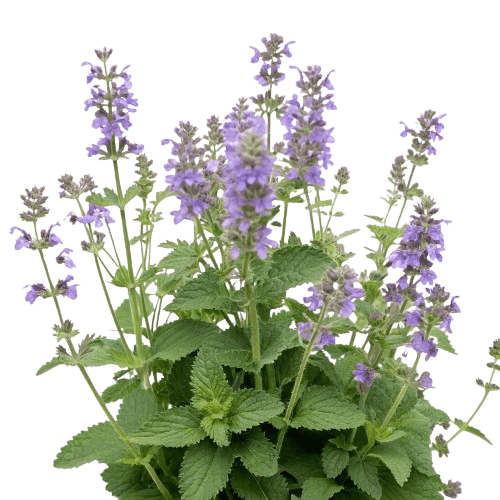
Catmint’s soft purple flowers and silvery foliage are a subtle but stunning complement to bee balm. It’s drought-tolerant and loves sun, just like its partner.
Catmint’s low, sprawling growth fills gaps around bee balm, and its scent deters pests.
Tip: Shear back after the first bloom for a second flush of flowers.
11. Peppers
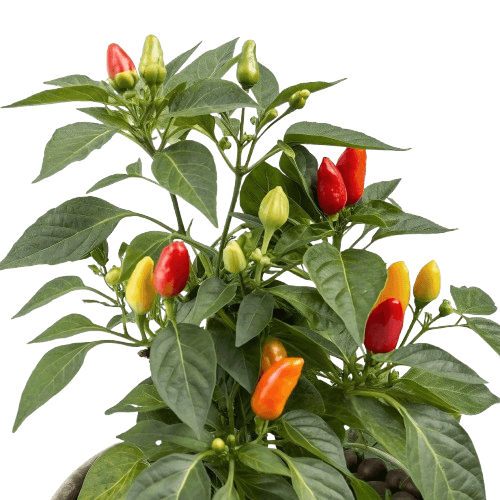
Another veggie buddy! Peppers and bee balm are a great combo because bee balm’s pollinators boost pepper yields, and its scent keeps pests like aphids away.
Bee balm adds height and beauty to a veggie bed without hogging space.
Tip: Plant bee balm on the north side of peppers to avoid shading them.
12. Coreopsis
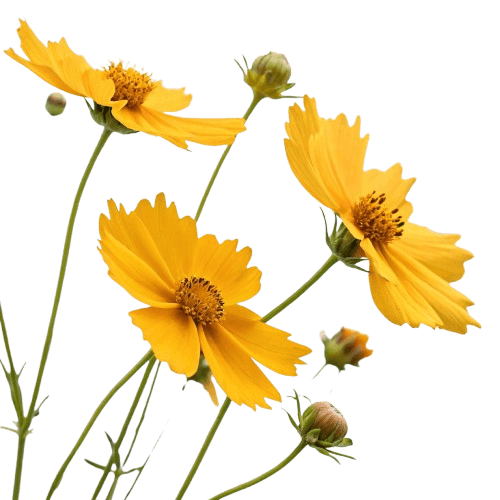
Coreopsis, with its bright yellow or pink daisy-like flowers, is a cheerful companion for bee balm. It’s tough, sun-loving, and blooms for ages.
Coreopsis’s delicate foliage contrasts with bee balm’s bolder leaves, and it attracts beneficial insects.
Tip: Try ‘Moonbeam’ coreopsis for a soft yellow that pairs well with pink bee balm.
13. Anise Hyssop
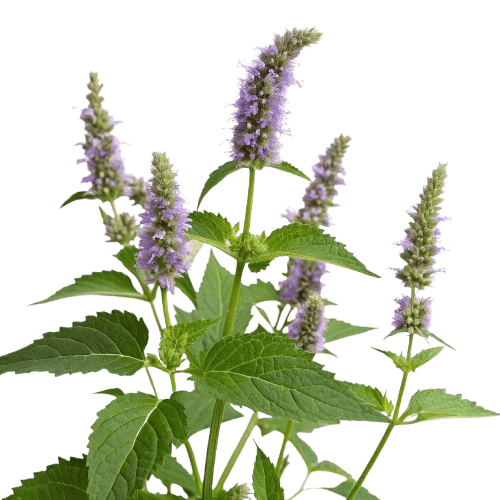
Anise hyssop’s spiky purple flowers and licorice-scented leaves make it a fantastic match for bee balm. Both are pollinator favorites and thrive in sunny, well-drained spots.
Its upright form complements bee balm’s bushiness, and it’s edible, too!
Tip: Use anise hyssop leaves for tea, just like bee balm.
Keeping Your Bee Balm Happy: Care Tips from My Garden
I’ve learned a thing or two about keeping bee balm thriving, and it’s not as tricky as you might think. Here’s what you need to know about bee balm care:
- Sunlight: Give it full sun (at least 6 hours a day) for the best blooms. It’ll tolerate some shade, but you’ll get fewer flowers.
- Soil: Bee balm likes well-drained soil that’s not too rich. Soggy roots are its kryptonite.
- Watering: Keep the soil moist but not swampy, especially when it’s young. Once established, it can handle a bit of drought.
- Deadheading: Wondering how to deadhead bee balm? Grab some sharp scissors and cut faded flower heads just above a pair of leaves. This keeps the blooms coming and stops them from spreading like wildfire.
- Dividing: Is bee balm a perennial? Yup, it comes back every year in zones 3–9. Every 3–4 years, dig up and divide clumps in spring or fall to keep it from getting too crowded.
Tip: Bee balm can get powdery mildew in humid weather. Space plants 18–24 inches apart and water at the base, not overhead, to keep leaves dry.
Starting Bee Balm from Seeds: My Step-by-Step Guide
Growing bee balm from seeds is a cheap way to fill your garden with these stunners. I’ve done it a bunch, and here’s what works:
- When to Start: Sow indoors 8–10 weeks before your last frost, or directly in the garden in spring or fall.
- Soil Setup: Use a seed-starting mix or light garden soil. Bee balm seeds need light to sprout, so just press them gently into the surface—don’t cover them.
- Watering: Keep the soil moist with a spray bottle to avoid washing seeds away.
- Germination: At 60–70°F, you’ll see sprouts in 2–3 weeks. Transplant seedlings with 2–3 true leaves to their final spot.
- Spacing: Give them 18–24 inches of elbow room to spread out.

Tip: Seeds can be slowpokes, so don’t give up. Start indoors to control the process.
Is Bee Balm Edible? A Tasty Surprise
Here’s a little secret: bee balm isn’t just eye candy—it’s edible! The leaves and flowers have this zesty, minty-citrus flavor that’s awesome in teas or as a salad topper. I first tried bee balm tea at a friend’s garden, and it was like sipping summer in a cup. Native Americans used it for everything from colds to tummy troubles, and it’s still a hit for herbal brews today.
How to Use It:
- Tea: Steep fresh or dried bee balm leaves in hot water for a refreshing drink.
- Salads: Sprinkle flower petals on greens for a colorful, tangy kick.
- Garnishes: Pop a flower on a dessert or cocktail for Insta-worthy flair.
Heads-Up: Make sure it’s really bee balm before eating, and try a small bit first to check for allergies.
Tip: Pick leaves in the morning for the strongest flavor—they’re packed with essential oils then.
Designing a Show-Stopping Bee Balm Garden
Want your garden to look like it belongs in a magazine? Here’s how to plan with bee balm and its buddies:
- Play with Color: Mix bee balm’s reds and pinks with yellow Stella D’Oro lilies or purple lavender for a vibrant palette.
- Mix Heights: Use tall bee balm (like ‘Jacob Cline’) as a backdrop, with shorter black-eyed Susan or echinacea up front.
- Texture It Up: Pair bee balm’s spiky blooms with lavender’s soft leaves or daylilies’ grassy foliage for contrast.
- Pollinator Party: Plant in clusters to create a buffet for bees and butterflies—they love variety.
Tip: Jot down a quick garden sketch before planting—it’s like a roadmap for success.
Conclusion – Bee Balm Companion Plants
Bee balm is the kind of plant that makes you fall in love with gardening all over again. Its bold blooms, pollinator-pulling powers, and pest-repelling scent make it a must-have, and the right bee balm companion plants—like echinacea, Stella D’Oro lilies, or even tomatoes—take it to the next level. With a bit of care (think deadheading and good spacing), your bee balm will thrive, turning your garden into a buzzing, blooming paradise.
Ready to give it a go? Plant some bee balm with these companions and watch your garden come alive.


 ChatGPT
ChatGPT
 Perplexity
Perplexity
 Claude
Claude
Leave a Reply